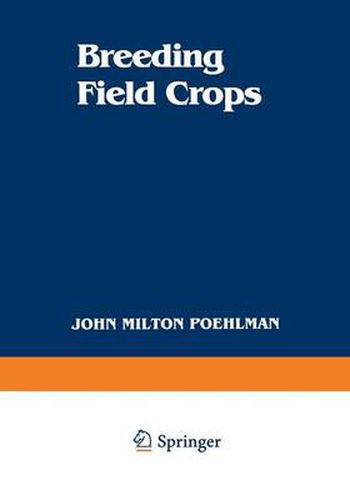Readings Newsletter
Become a Readings Member to make your shopping experience even easier.
Sign in or sign up for free!
You’re not far away from qualifying for FREE standard shipping within Australia
You’ve qualified for FREE standard shipping within Australia
The cart is loading…






This title is printed to order. This book may have been self-published. If so, we cannot guarantee the quality of the content. In the main most books will have gone through the editing process however some may not. We therefore suggest that you be aware of this before ordering this book. If in doubt check either the author or publisher’s details as we are unable to accept any returns unless they are faulty. Please contact us if you have any questions.
While preparing the first edition of this textbook I attended an extension short course on writing agricultural publications. The message I remember was select your audience and write to it.
There has never been any doubt about the audience for which this textbook was written, the introductory course in crop breeding. In addition, it has become a widely used reference for the graduate plant-breeding student and the practicing plant breeder. In its prepa ration, particular attention has been given to advances in plant-breeding theo ry and their utility in plant-breeding practice. The blend of the theoretical with the practical has set this book apart from other plant-breeding textbooks. The basic structure and the objectives of the earlier editions remain un changed. These objectives are (1) to review essential features of plant re production, Mendelian genetic principles, and related genetic developments applicable in plant-breeding practice; (2) to describe and evaluate established and new plant-breeding procedures and techniques, and (3) to discuss plant breeding objectives with emphasis on the importance of proper choice of objec tive for achieving success in variety development. Because plant-breeding activities are normally organized around specific crops, there are chapters describing breeding procedures and objectives for the major crop plants; the crops were chosen for their economic importance or diversity in breeding sys tems. These chapters provide a broad overview of the kinds of problems with which the breeder must cope.
$9.00 standard shipping within Australia
FREE standard shipping within Australia for orders over $100.00
Express & International shipping calculated at checkout
This title is printed to order. This book may have been self-published. If so, we cannot guarantee the quality of the content. In the main most books will have gone through the editing process however some may not. We therefore suggest that you be aware of this before ordering this book. If in doubt check either the author or publisher’s details as we are unable to accept any returns unless they are faulty. Please contact us if you have any questions.
While preparing the first edition of this textbook I attended an extension short course on writing agricultural publications. The message I remember was select your audience and write to it.
There has never been any doubt about the audience for which this textbook was written, the introductory course in crop breeding. In addition, it has become a widely used reference for the graduate plant-breeding student and the practicing plant breeder. In its prepa ration, particular attention has been given to advances in plant-breeding theo ry and their utility in plant-breeding practice. The blend of the theoretical with the practical has set this book apart from other plant-breeding textbooks. The basic structure and the objectives of the earlier editions remain un changed. These objectives are (1) to review essential features of plant re production, Mendelian genetic principles, and related genetic developments applicable in plant-breeding practice; (2) to describe and evaluate established and new plant-breeding procedures and techniques, and (3) to discuss plant breeding objectives with emphasis on the importance of proper choice of objec tive for achieving success in variety development. Because plant-breeding activities are normally organized around specific crops, there are chapters describing breeding procedures and objectives for the major crop plants; the crops were chosen for their economic importance or diversity in breeding sys tems. These chapters provide a broad overview of the kinds of problems with which the breeder must cope.